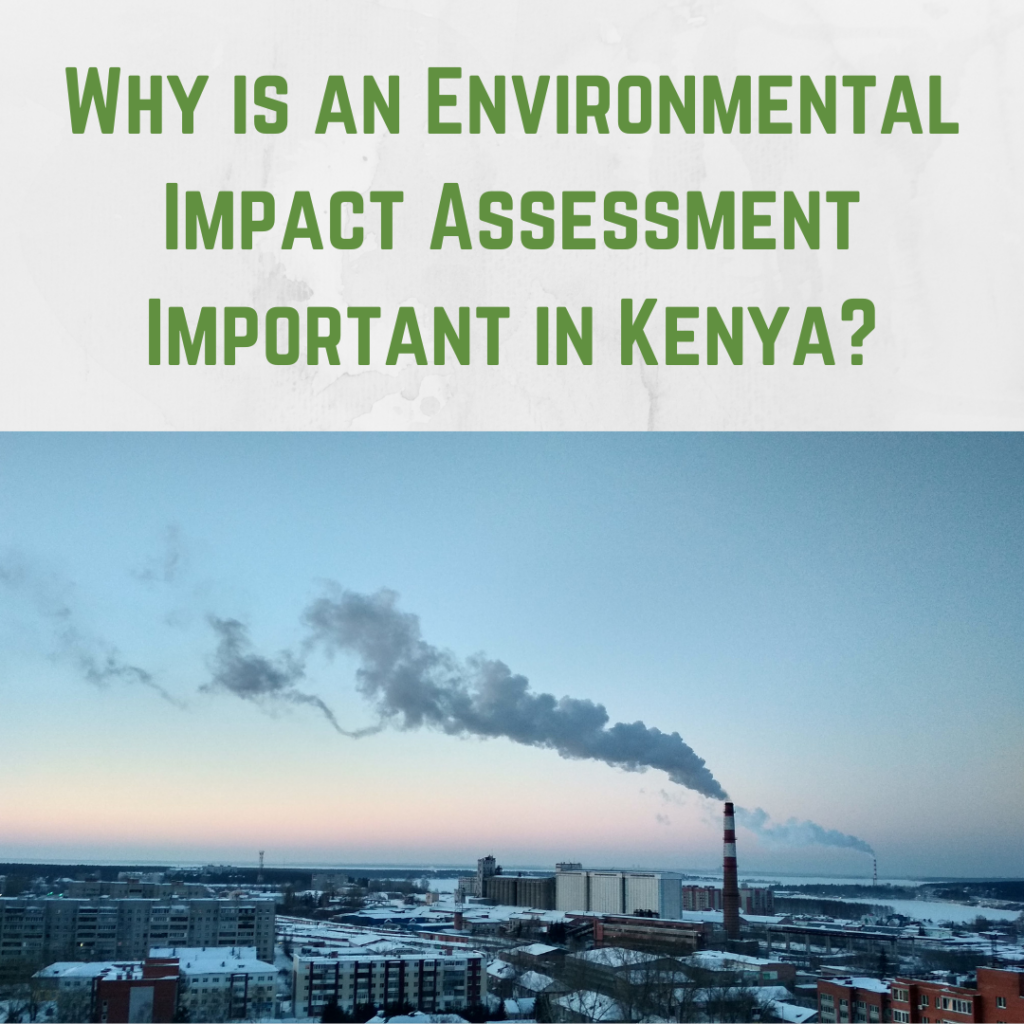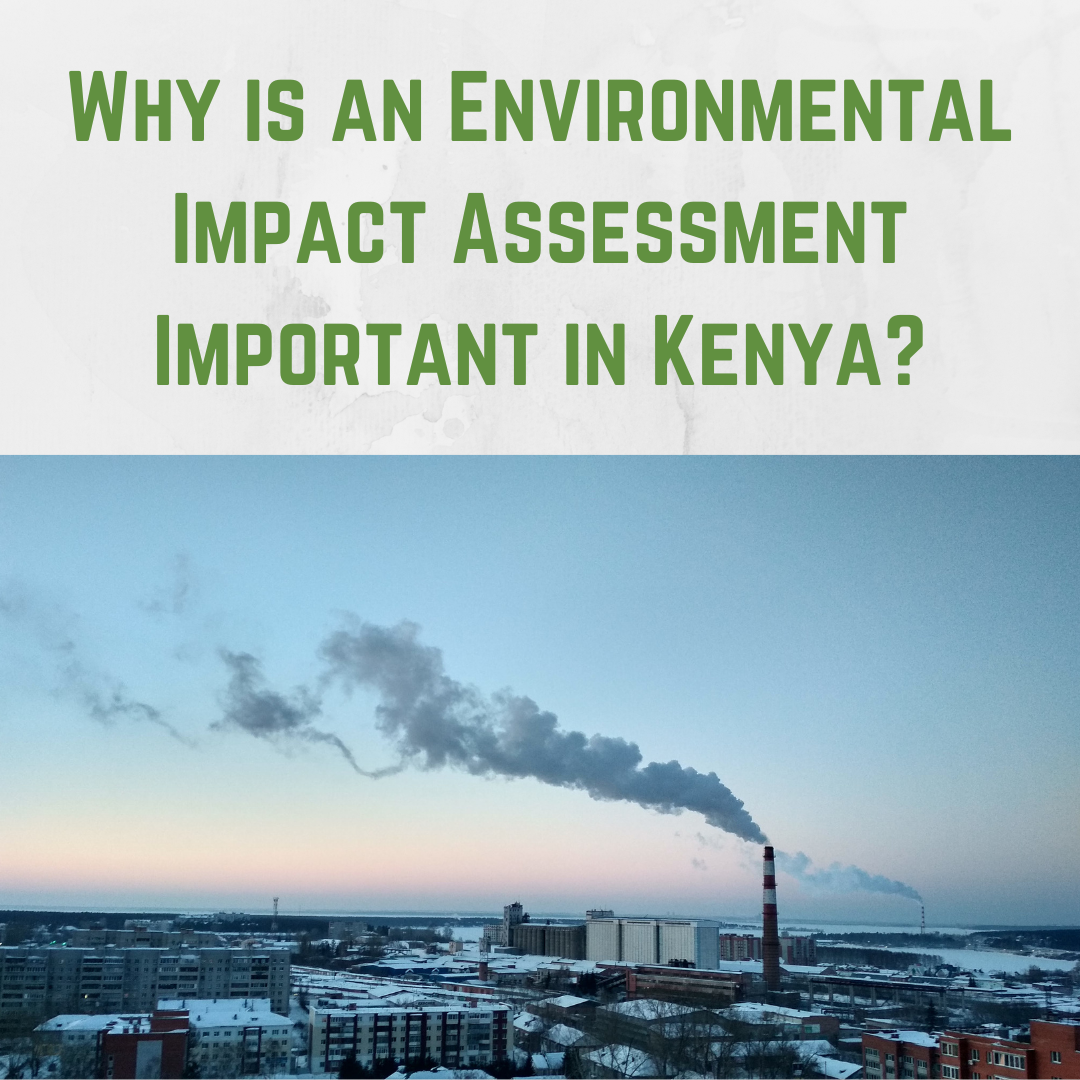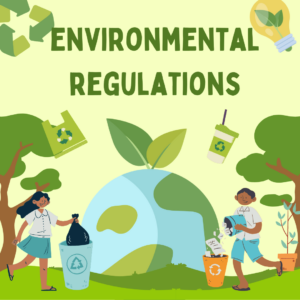If you are planning a project in Kenya, you may be required to undertake an Environmental Impact Assessment (EIA) before starting. Many people view this process as just another bureaucratic hurdle, but in reality, it is a crucial step in ensuring sustainable development and environmental protection.
An EIA is not just about compliance but a way to ensure that your project is well-planned, minimizes harm to the environment, and operates efficiently. In this post, we’ll explore why the EIA process is important, its benefits, and why every project proponent should take it seriously.
What is an Environmental Impact Assessment (EIA)?
An Environmental Impact Assessment (EIA) is a process that evaluates the potential environmental effects of a proposed project before implementation. The goal is to ensure that any negative impacts are identified, assessed, and mitigated before the project begins.
In Kenya, the EIA process is regulated under the Environmental Management and Coordination Act (EMCA), 1999, and its subsequent regulations. The National Environment Management Authority (NEMA) is responsible for reviewing EIA reports and issuing approvals.
Any project likely to have a significant impact on the environment must undergo an EIA and obtain an EIA License from NEMA before commencement.
Related posts:
- Step-by-Step Guide to the Environmental Impact Assessment Process in Kenya.
- Essential Attachments for EIA Report Submission to NEMA Kenya.
- Differences Between Environmental Impact Assessment (EIA) and Environmental Audit (EA) in Kenya.
Why is the EIA Process Important?
1. Legal Compliance and Avoiding Penalties
The Environmental Management and Coordination Act (EMCA), 1999, requires that all projects with potential environmental impacts undergo an EIA. If a project proceeds without an EIA license, the proponent may face:
- Hefty fines (up to KSh 2 million or imprisonment).
- Project suspension or closure by NEMA.
- Legal action and revocation of business licenses.
By undergoing the EIA process, project proponents ensure legal compliance and avoid costly legal consequences.
2. Protection of the Environment
Kenya is home to diverse ecosystems that provide essential services such as clean air, water, and fertile land. Poorly planned projects can lead to:
- Deforestation and loss of biodiversity.
- Air and water pollution.
- Soil erosion and land degradation.
An EIA ensures that environmental risks are identified early and that mitigation measures are put in place to prevent damage.

3. Safeguarding Public Health and Safety
Projects that involve industrial activities, waste disposal, or large-scale construction can pose serious health and safety risks. Some common hazards include:
- Exposure to hazardous chemicals affecting human health.
- Noise and air pollution leading to respiratory diseases.
- Poor waste management causing contamination of water sources.
Through the EIA process, such risks are assessed, and measures are put in place to protect public health and safety.
4. Promoting Sustainable Development
Sustainability is at the core of modern project planning. Conducting an EIA ensures that a project:
- Uses resources efficiently (water, energy, raw materials).
- Minimizes waste and pollution.
- Supports long-term environmental and social benefits.
Sustainable projects are more cost-effective, resilient, and socially accepted, ensuring long-term success.
5. Reducing Conflict with Communities
Many projects face resistance from communities if they are seen as harmful to the environment or public health. Common issues include:
- Noise and dust pollution affecting nearby residents.
- Displacement of people due to land acquisition.
- Water pollution impacting local livelihoods.
The EIA process involves public participation, ensuring that community concerns are addressed. This reduces resistance, legal disputes, and project delays.
6. Enhancing Business Reputation and Attracting Investors
- Many investors and financial institutions require an EIA license before funding a project.
- A company that follows environmental regulations gains public trust and credibility.
- Compliance with environmental laws reduces the risk of legal battles and fines.
A project with a strong environmental management plan is more likely to attract investors, partners, and support from regulatory authorities.
The EIA Process in Kenya
1️⃣ Screening: Determines whether a project requires a full EIA study.
2️⃣ Scoping: Identifies key environmental issues and stakeholders.
3️⃣ Baseline Data Collection: Assesses the current environmental conditions.
4️⃣ Impact Assessment and Mitigation Planning: Evaluates risks and suggests mitigation measures.
5️⃣ Public Participation: Involves affected communities in decision-making.
6️⃣ Submission of EIA Report to NEMA: A licensed EIA expert submits the report.
7️⃣ Review and Approval: NEMA evaluates the report, conducts site visits, and either approves, requests changes, or rejects the application.
8️⃣ Issuance of EIA License: If approved, NEMA grants an EIA license with specific conditions to follow.
Consequences of Skipping the EIA Process
Some project proponents may try to bypass the EIA process to save time and costs. However, this can lead to:
- Project delays due to legal disputes.
- Fines and legal action from regulatory authorities.
- Community resistance, leading to protests or shutdowns.
- Environmental damage that may require costly restoration.
To avoid these risks, always engage a NEMA-registered EIA expert and follow the required procedures.
Final Thoughts
Applying for an Environmental Impact Assessment (EIA) in Kenya is not just a regulatory requirement but a fundamental step toward sustainable development. By conducting an EIA, you:
- Ensure legal compliance and avoid fines.
- Protect the environment and public health.
- Promote sustainability and efficient resource use.
- Gain public trust and attract investors.
If you are planning a project, always consult a licensed EIA expert like me to guide you through the process. Sustainable development starts with responsible environmental management.
References
- Environmental Management and Coordination Act (EMCA), 1999
- Environmental (Impact Assessment and Audit) Regulations, 2003
- National Environment Management Authority (NEMA) Guidelines
Would you like guidance on the EIA process for your project? Send me an email at valeriekinoti@gmail.com.



